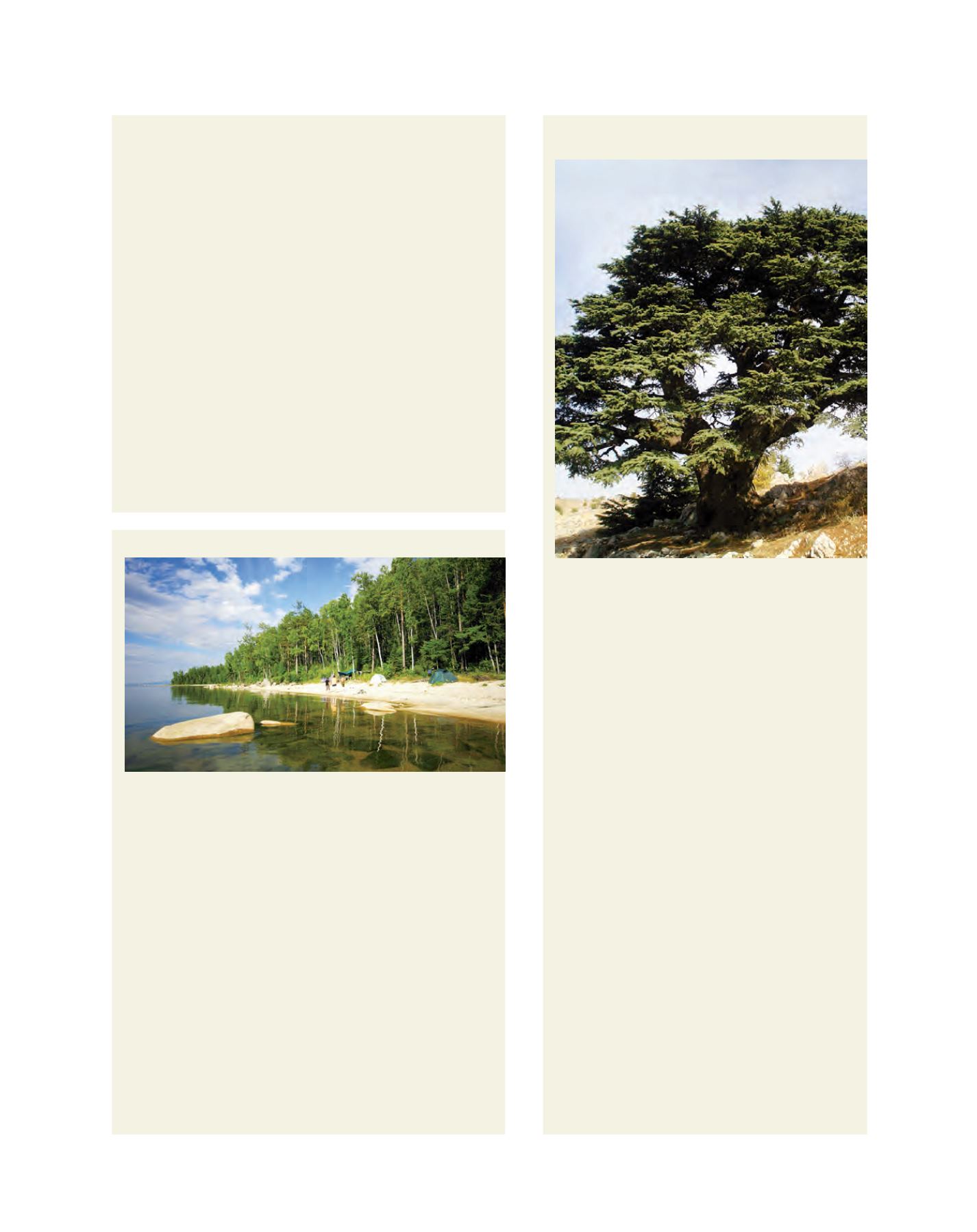

[
] 212
Viet Nam: Protecting Ho Chi Minh City’s water supply
With USAID funding, the USDA Forest Service is working with Winrock
International and the Government of Viet Nam’s Forest Protection
Department on an innovative partnership in Lam Dong Province. The joint
project will protect the watershed and water supply of Ho Chi Minh City,
home to more than four million people, by improving the management of
protected areas and developing methods for local people to profit from
protecting the forests surrounding the parks. For example, the hydropower
company is paying local people not to clear the forest and to pursue
sustainable enterprises such as bamboo handicrafts and ecotourism.
Vietnamese land managers had the opportunity to examine the innovative
watershed management approaches taken by the US cities of Seattle and
Albany through a study tour hosted by the USDA Forest Service. They learned
about ways in which public and private groups can work together to affordably
maintain clean water supplies for thousands of citizens by protecting forested
watersheds. Hydrology experts assisted in examining road development in Ho
Chi Minh City’s watershed and in recommending relocation or modification of
roads to reduce erosion and improve water quality downstream. Assistance was
also provided in analysing the locations of water quality gauging stations used
to compare sediment loads between areas of the watershed where tree cover
was being maintained and areas where agriculture was the dominant land use.
USDA Forest Service landscape architects helped to identify ways of making
ecotourism in Bidoup Nui Ba National Park more environmentally friendly and
beneficial to the local community. The lessons learned from the Lam Dong
project have helped inform cutting-edge national legislation, making Viet Nam
the first Southeast Asian nation to develop a system for national payments for
ecosystem services.
Image: Aysha Ghadiali, USDA Forest Service
Lebanon: Restoring the forests – a symbol
of national unity
For many centuries, Lebanon has benefited from its rich
forests, both economically and culturally. The Lebanon
cedar is an important symbol of Lebanese unity and
national pride, and Lebanon is one of the most heavily
forested countries in the Middle East. However, for various
economic, political and natural reasons, forest cover has
decreased by more than 35 per cent since 1960. This
decline, coupled with climate change, threatens national
identity, water security, ecosystem services and rural and
urban livelihoods. In 2001, the Government of Lebanon
released the National Reforestation Plan to increase total
forest cover by 20 per cent. With funding from USAID, the
USDA Forest Service is supporting this effort through the
Lebanon Reforestation Initiative (LRI), designed to provide
short-term employment in economically depressed and
environmentally degraded regions of Lebanon through the
strategic planting of several hundred thousand trees.
Since late 2010, the USDA Forest Service has partnered
with Lebanese governmental and non-governmental sectors
to provide technical expert assistance in planning, site
and tree selection, nursery and seedling development and
maintenance. Reforestation projects are inherently long
term, requiring preparation, planning and commitment.
The initiative takes a decentralized approach, engaging
rural communities at the municipal level. In addition
to planting trees, the LRI will establish reforestation
contracts to generate short-term employment in selected
villages; restore sites with important ecological, cultural
and watershed values; and enhance national extension
services.
All future reforestation efforts will benefit from sound
government extension services, viable commercial
nurseries producing high-quality seedlings and a fund to
provide resources for long-term investments in the forestry
sector. With sound technical and scientific assistance
and participation from the rural, urban and diaspora
communities, this work will set the stage for Lebanon’s
forests to thrive in the years to come.
Cedar Tree at Chouf Cedar Reserve in Lebanon
A mile deep and tens of millions of years old, the Siberian World Heritage
Site of Lake Baikal holds 20 per cent of the world’s unfrozen fresh water.
Local inhabitants are passionate about protecting the ‘Sacred Sea’ and the
lands surrounding it. The non-governmental organizations Great Baikal Trail
(GBT) and Tahoe Baikal Institute (TBI) protect Baikal by helping people make
a connection with this land and provide opportunities for them to care for it.
Activities undertaken by GBT and TBI include building ecotourism trails
and campgrounds, teaching environmental education to local children
and training young leaders. They create forums that bring natural resource
agencies together with non-governmental stakeholders.
With USAID funding, the USDA Forest Service has worked to build the
capacity of these organizations. Specialists have travelled to Baikal to teach
seminars on trail building and environmental education. Interns from GBT
were brought to the United States to study trail building, safety techniques,
wilderness first aid and non-profit and volunteer management. Financial
assistance was provided for environmental education events, roundtables and
training for governmental and non-governmental stakeholders.
USDA Forest Service specialists also worked with Baikalsky Reserve and
Pribaikalsky National Park, protected areas near Lake Baikal, in developing
major ecotourism development plans. A recreation manager and a landscape
architect provided consultations and training on designing ecotourism and
interpretation infrastructure and programmes.
Russia: Building stewardship at Lake Baikal
Campsite at tree line, Barguzinskii Zaliv, near Maksimikho, on the eastern
shore of Lake Baikal
Image: Thomas Weatherley, Great Baikal Trail
















